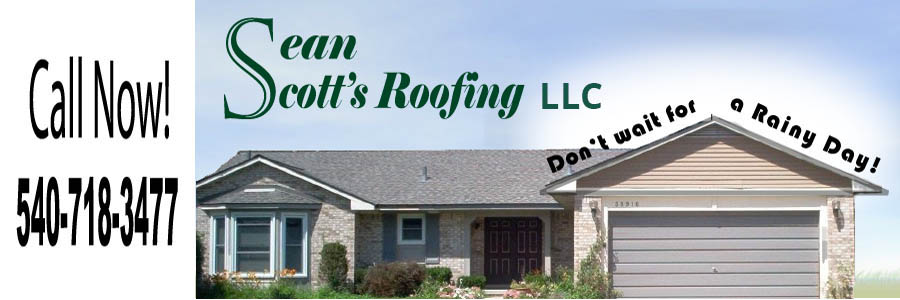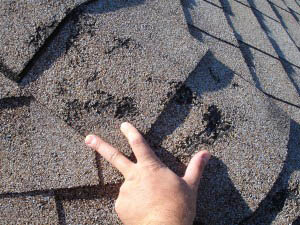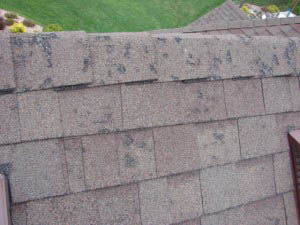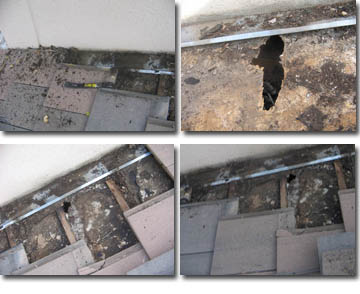

Hailstorms are frequent occurrences across the U.S. Most hailstorms occur during either the spring or fall months, are very localized events, and don't cause extensive property damage. However, occasionally hailstones can reach about 1.5 inches in diameter. When this occurs, they can cause significant property damage to cars, windows and siding. When hailstones reach three inches in diameter, they can cause major roof damage.
Consider replacing your roof covering with roofing material that received a UL impact resistant classification (UL2218) of Class 4, meets local building code standards and requires minimal upkeep and maintenance.



The protective granular surface of shingles wears off as the asphalt, into which the granules are embedded, begins to harden over time. Bare spots are often accompanied by fine fissures on the shingles' surface and by the accumulation of granules in the gutters.
The upward curling of shingle tabs makes them highly susceptible to wind and ice damage. This is a problem on older roofs where moisture build-up in the attic affects the underside of the shingle.
Damage can be caused by extreme wind conditions and snow removal. Since shingles are supposed to shed water, broken, torn or missing tabs become obvious entry points for water, especially on low slope roofs where run-off is slower and at the peaks of the roof where shingles are the most vulnerable to high winds.
This is the curling under of the shingle tab's bottom edge and is part of the normal aging process of shingles. The bulge created is susceptible to substantial damage by wind action, hail and ice.
Buckling is a visible distortion or waviness in the horizontal lines of shingles, and usually runs in a straight line up the roof slope. Shingle tabs become exposed to wind and can be torn off. Very often, the problem is warping in the roof deck caused by poor attic ventilation. The use of thinner-than-recommended plywoods and other non-plywood materials adds to the problem.
Many problems occur at the flashing around vents, soil stacks, chimneys and vertical wall joints. Is the flashing cracked? Is the caulking around the flashing dried out? Are the shingles that lie over the flashing in good shape?